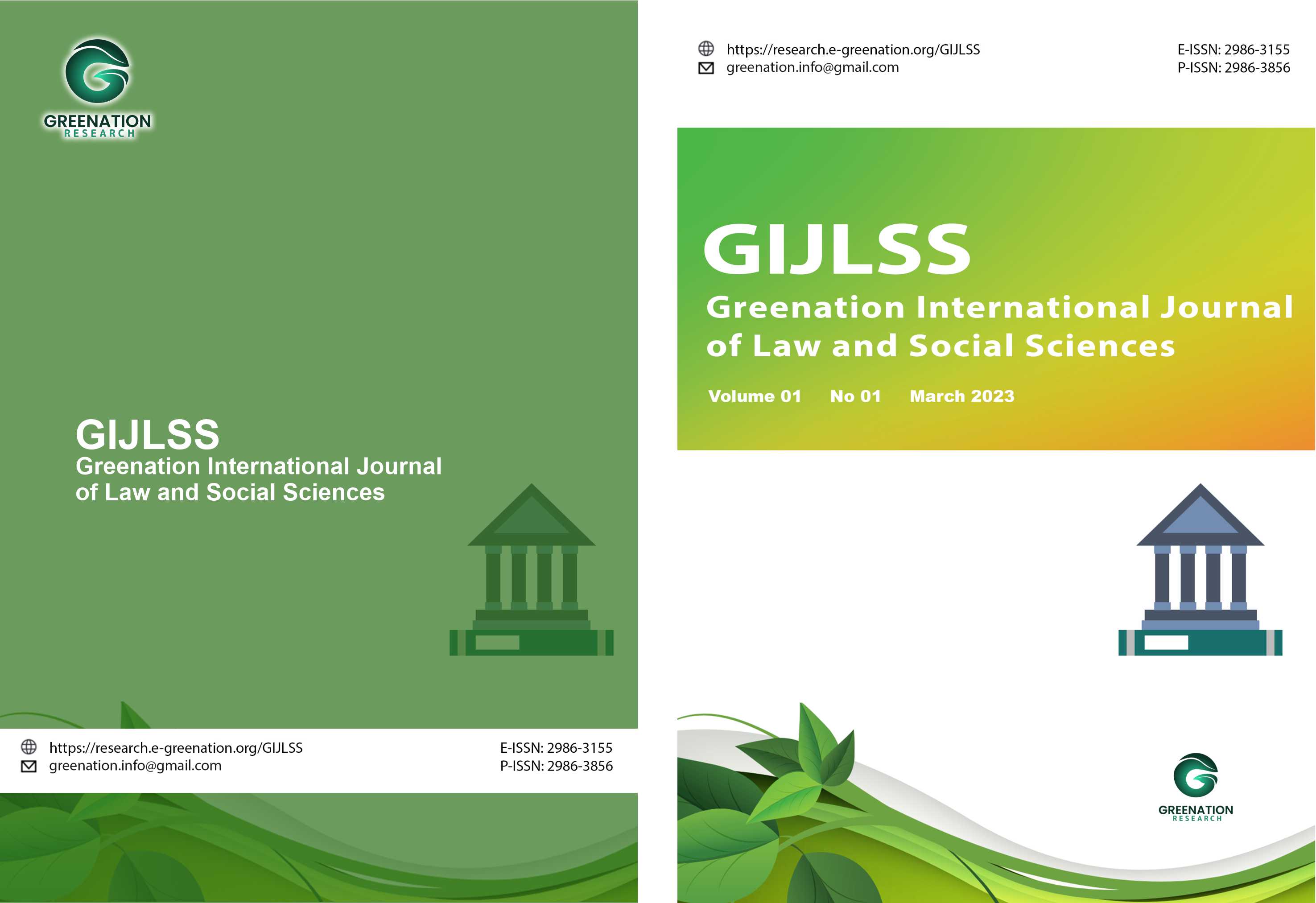The Fatherless Phenomenon: Building Self-Concept With Interpersonal Communication
DOI:
https://doi.org/10.38035/gijlss.v3i2.443Keywords:
Fatherless, Self-Concept, Interpersonal Communication, Social RelationsAbstract
This study is motivated by Indonesia's ranking as the third most fatherless country
in the world according to data from Narasi. The absence of a father in a child's life can shape
their self-concept, particularly in girls, and interpersonal communication plays a crucial role in
the process of social adjustment. This study aims to investigate how interpersonal
communication between fathers and daughters occurs, to understand the self-concept of girls
experiencing fatherlessness, and to identify the factors of interpersonal communication in
shaping the self-concept of girls experiencing fatherlessness. The research method used in this
study is descriptive qualitative, employing observation, in-depth interviews, and
documentation. The results of the study indicate that the self-concept of girls in fatherless
conditions can be shaped by effective patterns of interpersonal communication. Daughters who
lack effective interpersonal communication with their fathers tend to have negative self
concepts, but this can be minimized through adequate social support, such as daughters who
receive support from family, friends, or an environment that can help develop a more optimal
self-concept, even if the father's role is not fully fulfilled.
References
Addin, M. (2024). Fenomena Fatherless: Membangun Kemandirian di Tengah Kehilangan. https://www.kompasiana.com/muhammadaddinal-haq4195/67713b6eed64157bc92a2004/fenomena-fatherless-membangun-kemandirian-di-tengah-kehilangan
Amalia, L., & Ri’aeni, I. (2022). Analisis Komunikasi Interpersonal dalam Pembentukan Konsep Diri Penyintas Covid-19. Journal of Da’wah and Communication, 63(1), 2775–5207.
Anfi, A. H. N. A., Salsabilah, B., Khumayah, S., & Aghnia, D. L. (2024). Self- Affirmation Through Meditation In The Formation Of Self-Concept. 6(1), 155–167.
Ashari, Y. (2018). Fatherless in indonesia and its impact on children’s psychological development. Psikoislamika?: Jurnal Psikologi Dan Psikologi Islam, 15(1), 35. https://doi.org/10.18860/psi.v15i1.6661
Astika, D. (2016). Pengaruh Komunikasi Interpersonal Anak Dengan Orang Tua the Influence of Interpersonal Communication Between Children and.
Bago, A., Lumapow, H., & Hartati, M. (2024). Forgiveness pada Pria dan Wanita Dewasa Awal yang Mengalami Fatherless di Kota Tomohon. Psikopedia, 5(1), 59–64. https://doi.org/10.53682/pj.v5i1.8647
Creswell, J. W. (2018). Qualitative, Quantitative, and Mixed Methods Approaches. SAGE Publications.
Dascha, T. A., & Cahyono, R. (2024). Pengaruh Ketiadaan Peran Ayah (Fatherless) terhadap Self-Esteem pada Emerging Adulthood. Departemen Psikologi Klinis Dan Kesehatan Mental.
Devito, J. A. (2016). The Interpersonal Communication Book. Pearson Education.
Dian, R. (2023). Indonesia Peringkat 3 Fatherless Country di Dunia, Mempertanyakan Keberadaan ‘Ayah’ dalam Kehidupan Anak. https://narasi.tv/read/narasi-daily/indonesia-peringkat-3-fatherless-country-di-dunia-mempertanyakan-keberadaan-ayah-dalam-kehidupan-anak#google_vignette
Halimatussa’diyah, S. (2019). Komunikasi antarpribadi dalam konsep diri remaja dengan orangtua tunggal. Receiver Studi Ilmu Komunikasi, Penyiaran Islam, Dan Pengembangan Dakwah, 1(1), 25–45. https://www.ojs.serambimekkah.ac.id/RCV/article/view/4746/3485
Ilahiya, N. F., Arifin, I. Z., & Tajiri, H. (2024). Kehadiran Bimbingan dan Konseling untuk Mengatasi Problematika Kekerasan dalam Rumah Tangga ( Fatherless ): Sebuah Kajian Pustaka. 1(1), 27–34.
Liliweri, P. D. A. (2017). Komunikasi Antarpersonal. Kencana Group.
Majazeta Yusrina, K., Aliffah, N. U., & Holilah, M. (2024). Insecurities: Fenomena Konsep Diri Akibat Pola Asuuh Orang Tua. Jurnal Sosial Dan Sains, 4(1), 68–75. https://doi.org/10.59188/jurnalsosains.v4i1.1181
Nurfalah, F., Fajarianto, O., Wihayati, W., & Noviani, S. (2020). Menciptakan Kepercayaan Diri Remaja Melalui Pengembangan Kepribadian. Janaka, Jurnal Pengabdian Masyarakat, 3(1), 87–96. http://ejournal.staida-krempyang.ac.id/index.php/janaka/article/view/254
Puspita, C., & Aan, S. (2020). Komunikasi Antarpribadi Dengan Lawan Jenis Pada Perempuan Fatherless. Komunikasi Interpersonal, 16(2), 1–9. https://doi.org/10.32734/komunika.v16i2.4743
Rahayu, D., Wahyuni, & Anggariani, D. (2024). Dampak Fatherless Terhadap Anak Perempuan (Studi Kasus Mahasiswi UIN Alauddin Makassar). Jurnal Macora, 3(1), 131. https://quran.kemenag.go.id/quran/per-ayat/surah/31?from=1&to=34
Saidin, Y. L. O. J. (2015). Komunikasi Antar Pribadi Single Parent Dalam Membentuk Konsep Diri Positif Anak Desa Dete Kecamatan Tomia Timur. 6.
Sundari, A. R., & Herdajani, F. (2013). Dampak Fatherlesness Terhadap Perkembangan Psikologis Anak. Prosiding Seminar Nasional Parenting 2013, 53(9), 1689–1699.
Supriadi, E. R., Syahputra, A. W., & Ali, U. (2024). Hubungan Fatherless Terhadap Kecerdasan Spiritual dan Kecerdasan Emosional Remaja Kristen GPdI Wilayah I Kota Kupang?: Studi Kuantitatif The Relationship between Fatherlessness and Spiritual Intelligence and Emotional Intelligence of GPdI Christian Adoles. 5(2), 84–103. https://doi.org/10.25278/jitpk.v5i2.978
Zaini, P. M., Zaini, P. M., Saputra, N., Penerbit, Y., Zaini, M., Lawang, K. A., & Susilo, A. (2023). Metodologi Penelitian Kualitatif (Issue May).
Zuchri, A. (2021). Metode Penelitian Kualitatif. Syakir Media Press.
Downloads
Published
How to Cite
Issue
Section
License
Copyright (c) 2025 Annisa Annastia Suarna, Siti Khumayah, Aghnia Dian Lestari

This work is licensed under a Creative Commons Attribution 4.0 International License.
Copyright :
Authors who publish their manuscripts in this journal agree to the following conditions:
- Copyright in each article belongs to the author.
- The author acknowledges that the Greenation International Journal of Law and Social Sciences (GIJLSS) has the right to be the first to publish under a Creative Commons Attribution 4.0 International license (Attribution 4.0 International CC BY 4.0).
- Authors can submit articles separately, arrange the non-exclusive distribution of manuscripts that have been published in this journal to other versions (for example, sent to the author's institutional repository, publication in a book, etc.), by acknowledging that the manuscript has been published for the first time at GIJLSS.
























